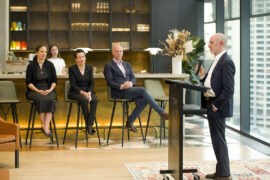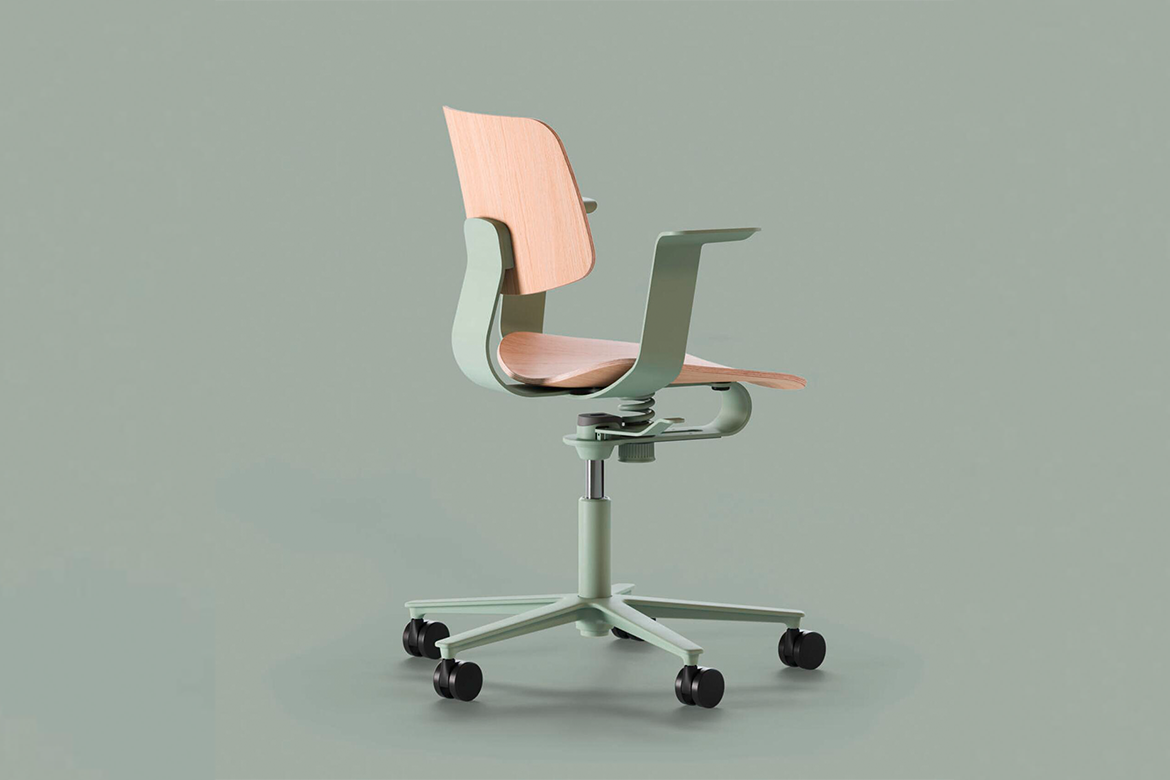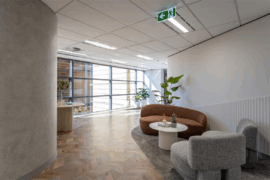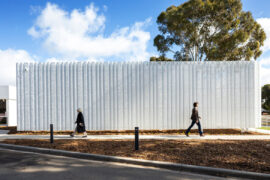The ‘workplace revolution’ began in the late 20th century, except that from today’s perspective it looks more like an evolution than revolution. As the latest issue of Indesign magazine finds its way into your hot little hands, Paul McGillick shares highlights and reflections.

February 5th, 2019
The re-thinking of workplace design over the last three decades certainly reflects a recognition of the importance of innovation, resilience and agility in a fast-changing and increasingly competitive business environment. But, of course, it also reflects the emergence of new kinds of businesses, technologies and community values.
Among the many extraordinarily innovative new workplaces that have emerged, there have also been a lot that amounts to little more than a decorative make-over. True, offices are brighter, more playful and offer more amenity to staff, but how much do they really add to productivity, efficiency and innovation? Well, the jury is still out on that because we struggle with metrics to quantify the benefits of, say, activity-based working. But intuitively we feel that an intelligently designed workplace results in commercial benefits.
The key thing is to align the business model with the design strategy. This requires an evidence-based return brief from the designers which, in turn, depends upon a thorough understanding of the business and its culture – or the culture it aspires to become. As we discover in this issue of Indesign, workplace design is increasingly being driven by information technology (rather than, as before, simply incorporating IT into the new workplace) and a growing awareness of the inter-connectivity of business and businesses. This implies ever-greater flexibility and thinking outside the box when we look at how, when, where and why we work.
Andrea Stevens talks of “cross-pollination” in her review of the developing Wynyard Quarter on Auckland’s re-purposed waterfront. And, having been there recently myself, I can testify that this development is astonishing in its vision, mixing as it does freelancers, entrepreneurs, start-ups, established small, medium and corporate businesses – and all of that in a mix of commercial, residential, hospitality, marine industry and public space, not to mention Auckland’s fabulous fish market. This is an entire precinct (including the interior design of individual buildings) created to serve the contemporary needs of a flexible and fully connected business environment.
Other articles in this special issue touch on other current themes. For example, wellness as a driver of workplace design. The One Microsoft Place project in Ireland stresses “holistic wellbeing” as a driver of productivity and innovation, emphasising the value of connection both inside the building and with the natural world outside, while also embracing workplace diversity as a valuable resource rather than simply some kind of human rights issue.
The QT hotel in Perth is a recent example of a shift in thinking in the hospitality sector. Traditionally, hotels have been amazingly tokenistic in the amenities they provide to business guests, despite the fact that much of their custom comes from business. But this is changing as hotels pick up on the spirit of co-working, providing a range of work and meeting spaces together with the appropriate technological support.
Then, at the other end of the spectrum, we reveal a workplace, Agents of Spring, which is endlessly re-configurable and predicated on the power of play to generate fresh ideas and new levels of collaboration.
If a workplace is to be fit for purpose, then we need to know what the purpose is and that requires inside-out thinking. But it also requires thinking not just outside the square, but outside the business because businesses do not operate in isolation from other businesses, nor indeed from the community at large. As the nature of business activity changes along with the entire relationship between work and life, so the workplace must evolve. In fact, it may even dematerialise altogether.
Lead project image: The Imprint at Paradise City, Seoul, by MVRDV, features an arresting splash of gold at the entrance to the nightclub building; it’s bright enough even to catch the eyes of passengers landing at the nearby Incheon Airport. © Ossip van Duivenbode, courtesy of MVRDV. Paul McGillick is a writer, editor, public speaker, and special edition editor of the Indesign ‘Workplace Evolution’ issue.
Want more insights from the current workplace evolution? Join our mailing list.
INDESIGN is on instagram
Follow @indesignlive
A searchable and comprehensive guide for specifying leading products and their suppliers
Keep up to date with the latest and greatest from our industry BFF's!

For those who appreciate form as much as function, Gaggenau’s latest induction innovation delivers sculpted precision and effortless flexibility, disappearing seamlessly into the surface when not in use.

The undeniable thread connecting Herman Miller and Knoll’s design legacies across the decades now finds its profound physical embodiment at MillerKnoll’s new Design Yard Archives.

BLP’s new Sydney Children’s Hospital, Randwick building brings together paediatric care, family-centred design and Australia’s first Children’s Comprehensive Cancer Centre in a major addition to the Randwick Health & Innovation Precinct.

The eponymous practice founder reflects on four decades of work in a new book launched by Lord Mayor Clover Moore, tracing lessons from New York to Sydney and revisiting seminal works including 8 Chifley Square and the Andrew “Boy” Charlton Pool.

True sustainability doesn’t have to be complicated. As Wilkhahn demonstrate with their newest commercial furniture range.

A thoughtful, low-waste redesign by PMG Group in collaboration with Goodman has transformed a dated office into a calm, contemporary workspace featuring a coastal-inspired palette and Milliken flooring for a refined finish.
The internet never sleeps! Here's the stuff you might have missed

Through expert architecture, EBD Architects has provided a human face to great design and created a project that enhances the lives of people and community.

Indesign Media is aware of recent reports raising serious concerns about Australian architectural photographer Derek Swalwell.

The World Architecture Festival has named The Holy Redeemer Church and Community Centre of Las Chumberas in La Laguna, Spain as World Building of the Year 2025, alongside major winners in interiors, future projects and landscape.